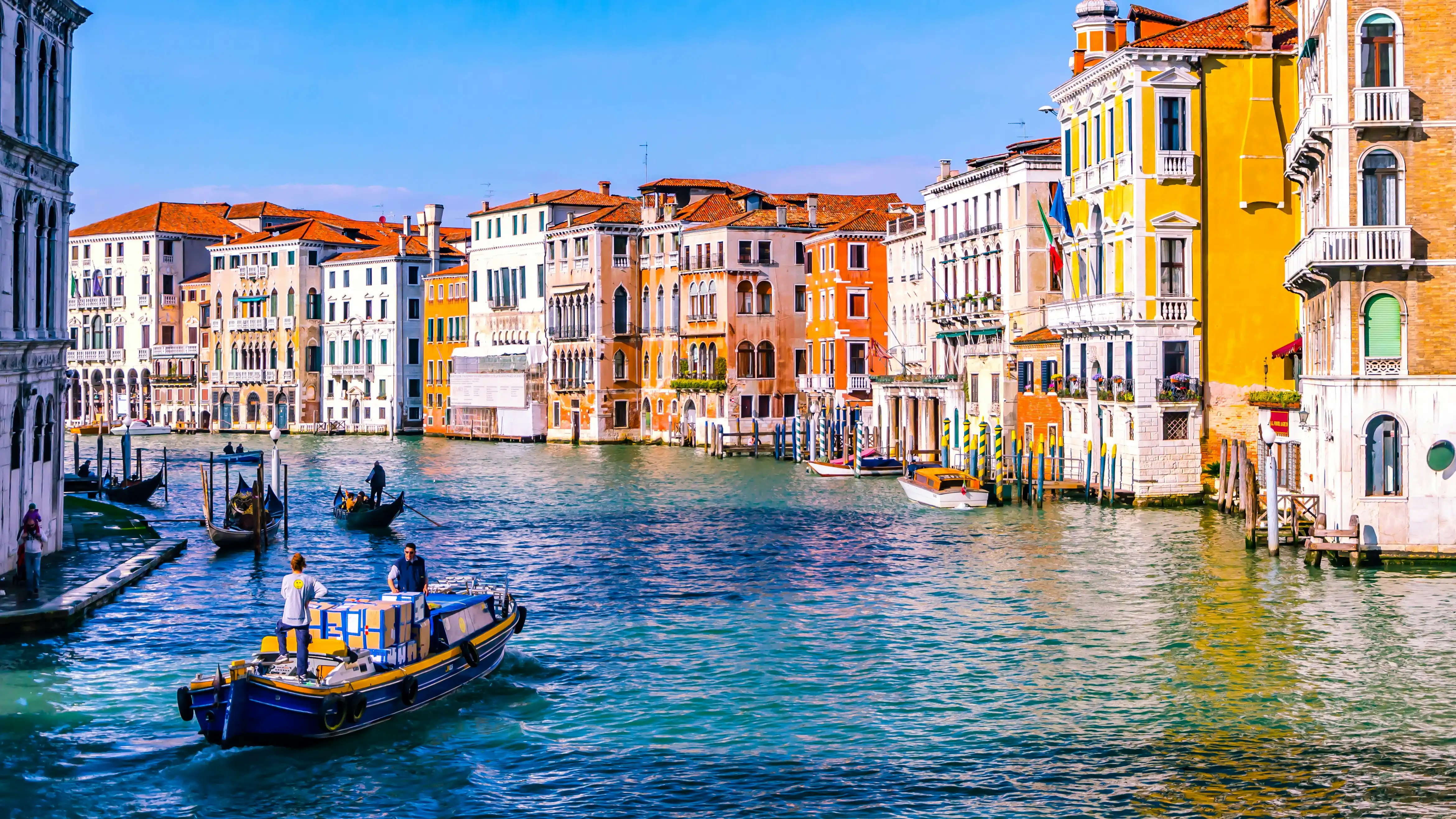
6 Best Attractions in the Floating City of Venice
Few places in the world stir the soul quite like Venice. Elegant, timeless, and unlike anywhere else, this city built on water is more than just a destination; it’s an experience.
I recently had the pleasure of returning to La Serenissima on a Po River cruise, and once again, Venice captured my heart. Despite having explored countless cities across Europe and beyond, Venice remains my all-time favorite. What sets it apart is its rare mix of authentic charm, artistic richness, and romantic decay, all wrapped into a stunning, maze-like cityscape that begs to be wandered.
If you’re planning your first visit, you won’t want to miss the highlights that truly define this unique Italian treasure. I’ve put together a list of 6 must-see sights in Venice that will help you make the most of your time in this magical city.
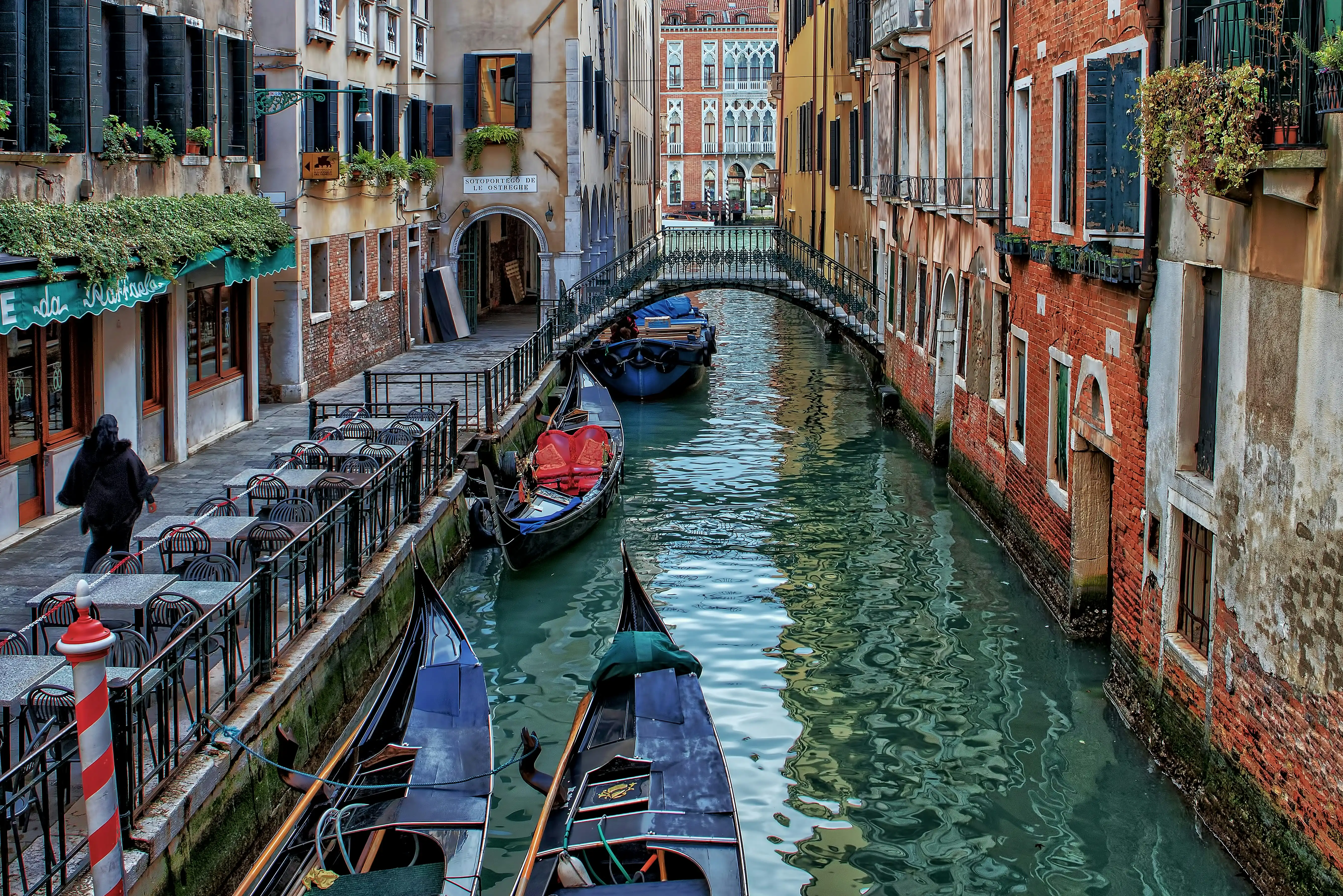
Top 6 Must-See Sights in Venice
1. St. Mark’s Square (Piazza San Marco)
No visit to Venice is complete without setting foot in St. Mark’s Square, the city’s most iconic and majestic landmark. Known as "the most elegant drawing room in Europe," a title once given by Napoleon Bonaparte, the piazza is both the historic and emotional core of the Floating City.
Framed by architectural treasures, the square is home to the dazzling St. Mark’s Basilica, a masterpiece of Byzantine and Renaissance art. Its intricate marble façade, golden mosaics, and onion-shaped domes instantly transport visitors into the city’s grand past. Next door stands the ornate Doge’s Palace (Palazzo Ducale), once the seat of Venice’s political power.
Rising high above the square is the Campanile di San Marco, Venice’s tallest structure. A quick elevator ride to the top rewards you with sweeping panoramic views of the Grand Canal, the Venetian Lagoon, and the city’s terracotta rooftops.
Surrounding the piazza, graceful arcades host legendary cafés like Caffè Florian and Gran Caffè Quadri, where live orchestras play in the open air. Sip an espresso as music mingles with the flutter of pigeons and the echo of footsteps across polished stone.
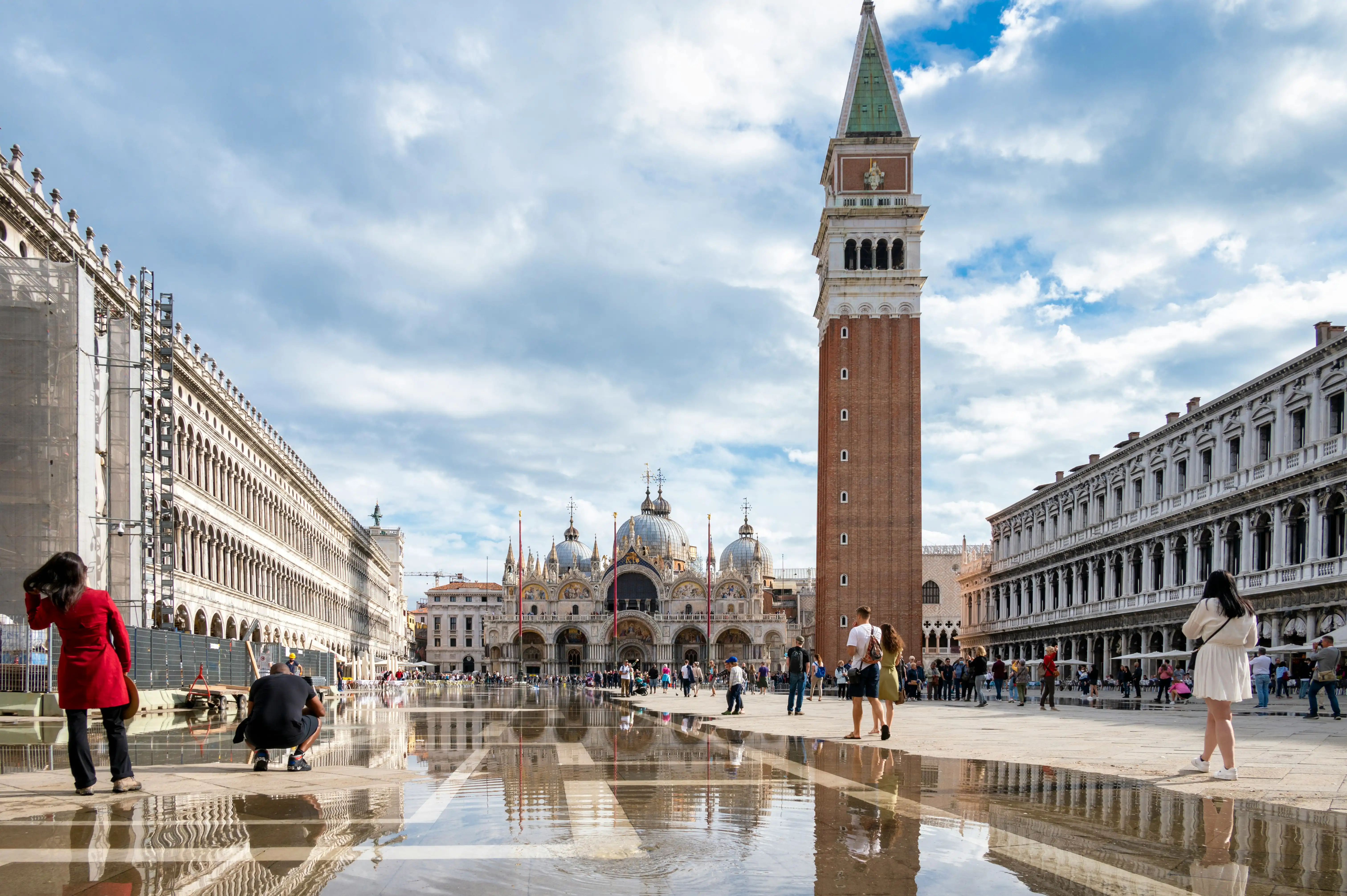
2. The Doge’s Palace (Palazzo Ducale)
Standing proudly next to St. Mark’s Basilica, the Doge’s Palace (Palazzo Ducale) is one of Venice’s most iconic landmarks, a living testimony to the city’s political power and artistic wealth during its golden age.
Once the residence of the Doge (Venice’s chief magistrate) and the seat of the Republic of Venice’s government, this Gothic masterpiece was at the center of one of the most powerful maritime empires in Western history.
The exterior alone is striking, an elegant façade of pink Verona marble and white Istrian stone, with pointed arches and carved detailing. Step inside, and the splendor deepens. The inner courtyard, cloaked in pale marble, opens like a serene stage before the drama of history unfolds upstairs.
Climb the grand Scala dei Giganti (Staircase of the Giants), and you’ll enter a series of vast halls, once the setting for council meetings, court sessions, and grand receptions. Every room is a canvas of Renaissance frescoes, gilded ceilings, and intricate woodwork, many of which were painted by Venetian masters such as Tintoretto, Veronese, and Titian
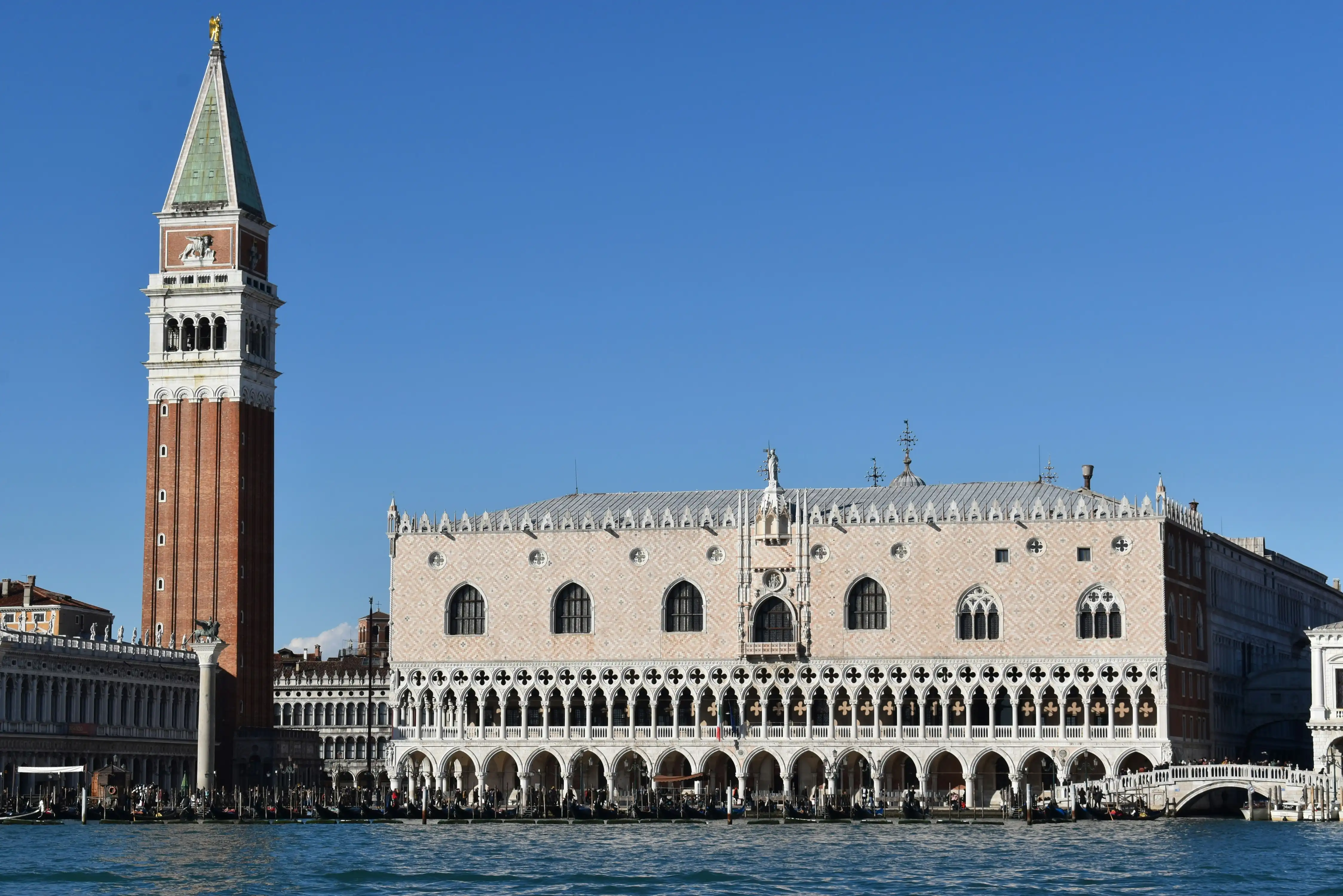
3. The Bridge of Sighs (Ponte dei Sospiri)
Suspended high above the Rio di Palazzo canal, the Bridge of Sighs (Ponte dei Sospiri) is one of Venice’s most photographed landmarks, and one of its most haunting.
This enclosed Baroque-style bridge connects the elegant Doge’s Palace with the city’s former prison cells. Its name, coined in romantic legend, refers to the sighs of prisoners who, through the small stone-trimmed windows, caught their last glimpse of Venice, and perhaps of freedom, before descending into darkness.
While French writer André Suarès once called it a “flying coffin,” the bridge’s beauty tells a more poetic tale. Its delicate arches, pale limestone, and enclosed silhouette stand out against the sky. It’s one of the few covered bridges in Venice, and its symbolism continues to stir emotion.
Today, travelers line up along the nearby Ponte della Paglia to capture the classic view: a gondola gliding gently beneath, framed perfectly by the arch. It's a moment that blends Venetian romance and historical weight in a single photo.
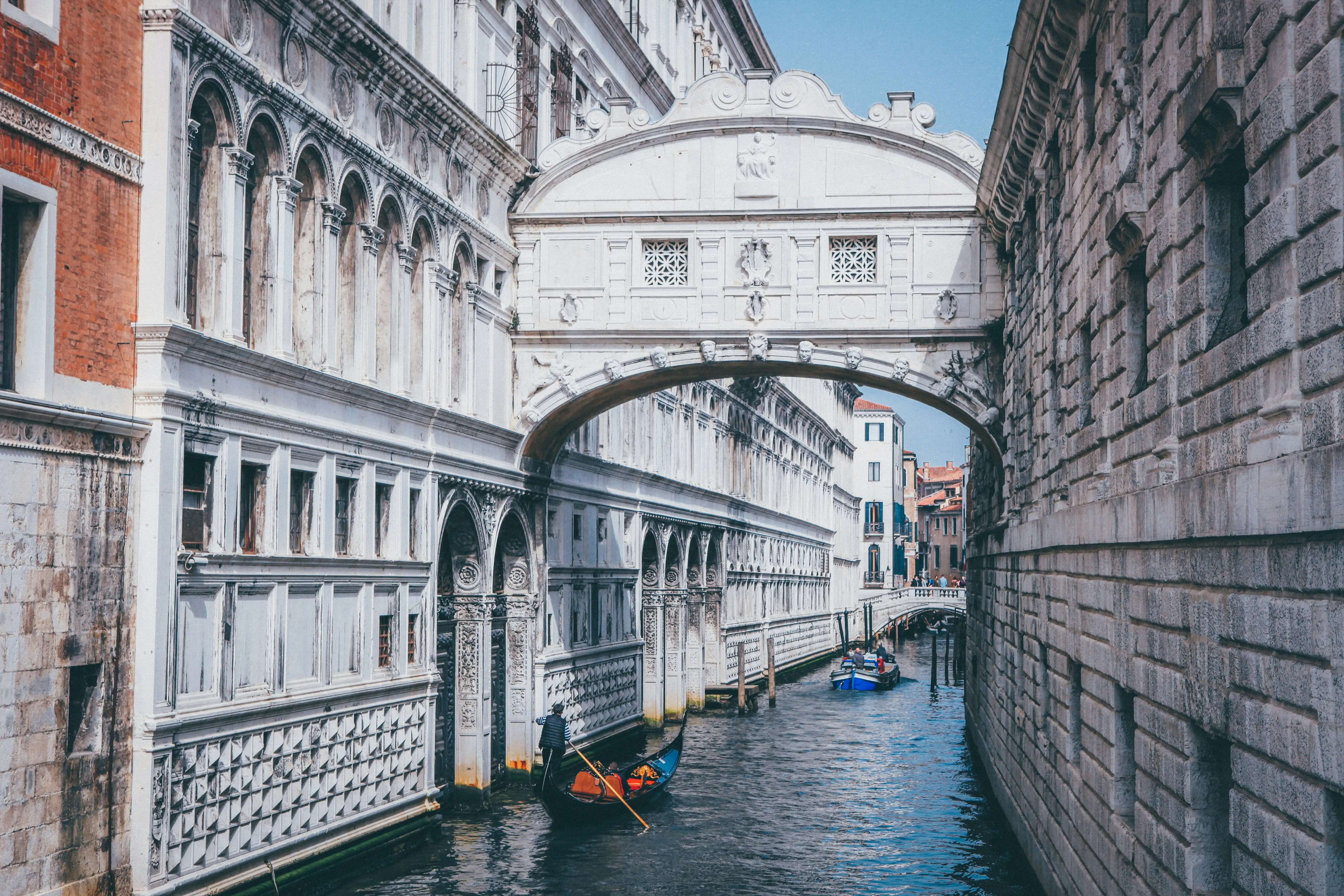
4. The Rialto Bridge (Ponte di Rialto)
Spanning the Grand Canal at its narrowest point, the Rialto Bridge (Ponte di Rialto) is both the oldest and most famous of Venice’s four canal crossings.
Completed in 1591, this striking stone arch bridge replaced a series of wooden predecessors, finally offering a permanent link between the bustling districts of San Marco and San Polo. Its robust marble construction and elegant symmetry make it a masterpiece of Renaissance engineering and a vital artery in the heart of the city.
Lined with a dozen small boutiques, the bridge once served as a commercial hub near the Rialto Market, Venice’s historic trading center. Even today, the area pulses with local life.
From the top, the panoramic view of the Grand Canal is unforgettable. While gondolas and vaporettos (Venice’s water buses) glide below, you can pause and soak in the city’s rhythm, colorful palazzos, shimmering reflections, and the timeless bustle of Venetian daily life.
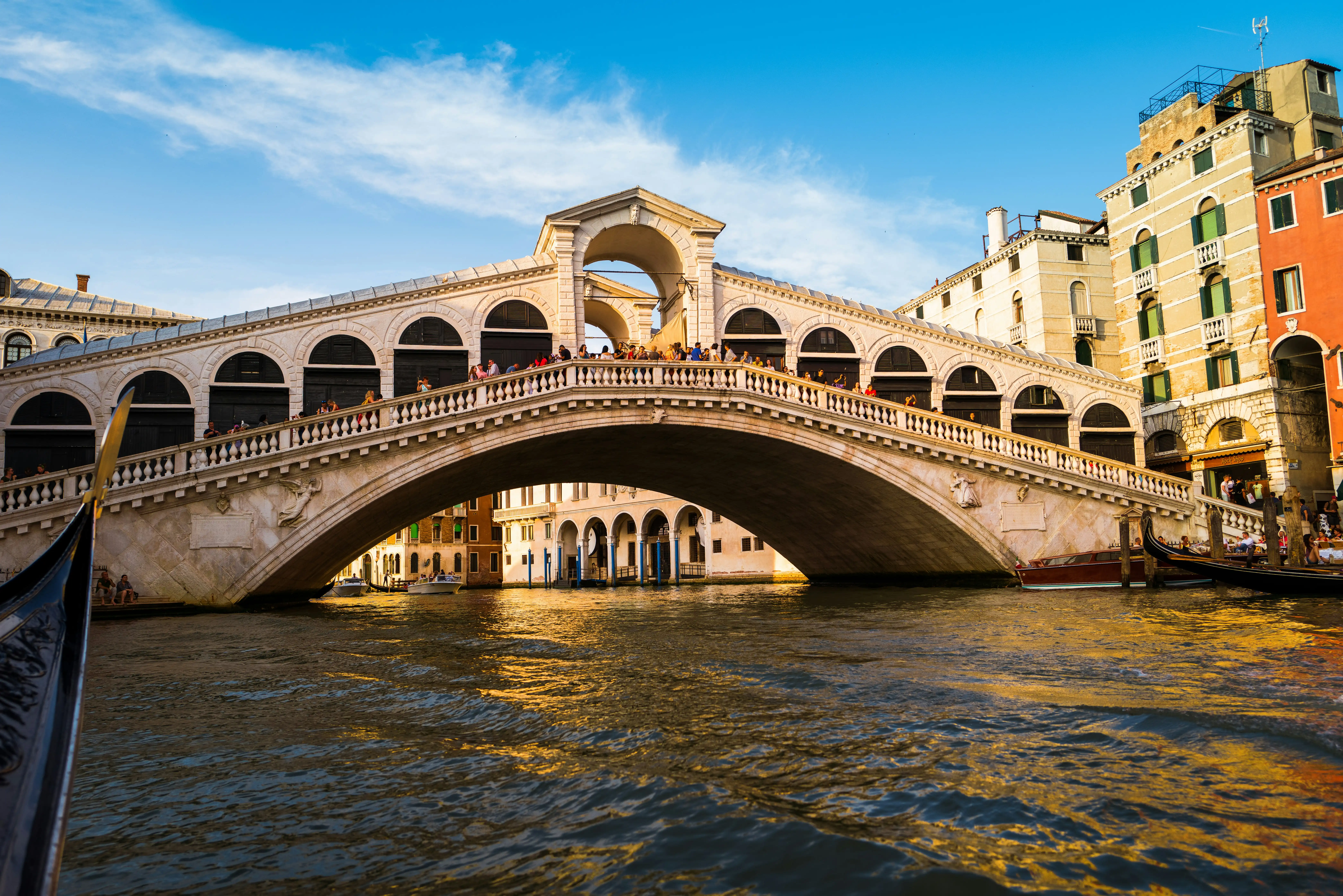
5. Murano Island
Just a short vaporetto ride from Venice’s main island lies Murano, a peaceful gem known worldwide for its centuries-old tradition of glassmaking. Visiting Murano offers not only a break from the crowds but a deeper look into one of the city's most iconic crafts.
Since the 13th century, Murano glass has been celebrated for its precision, color, and creativity. Today, visitors can watch master artisans at work in glassblowing studios, where molten sand transforms into intricate chandeliers, vases, jewelry, and art pieces, each one shaped by fire and breath.
Start your visit at the Museo del Vetro (Glass Museum), which traces the island’s history from Roman glassware to avant-garde installations. Then stroll along the canal-side workshops, explore quaint shops selling authentic Murano creations (always ask for the official certificate), and enjoy a relaxed pace far from the city’s tourist rush.
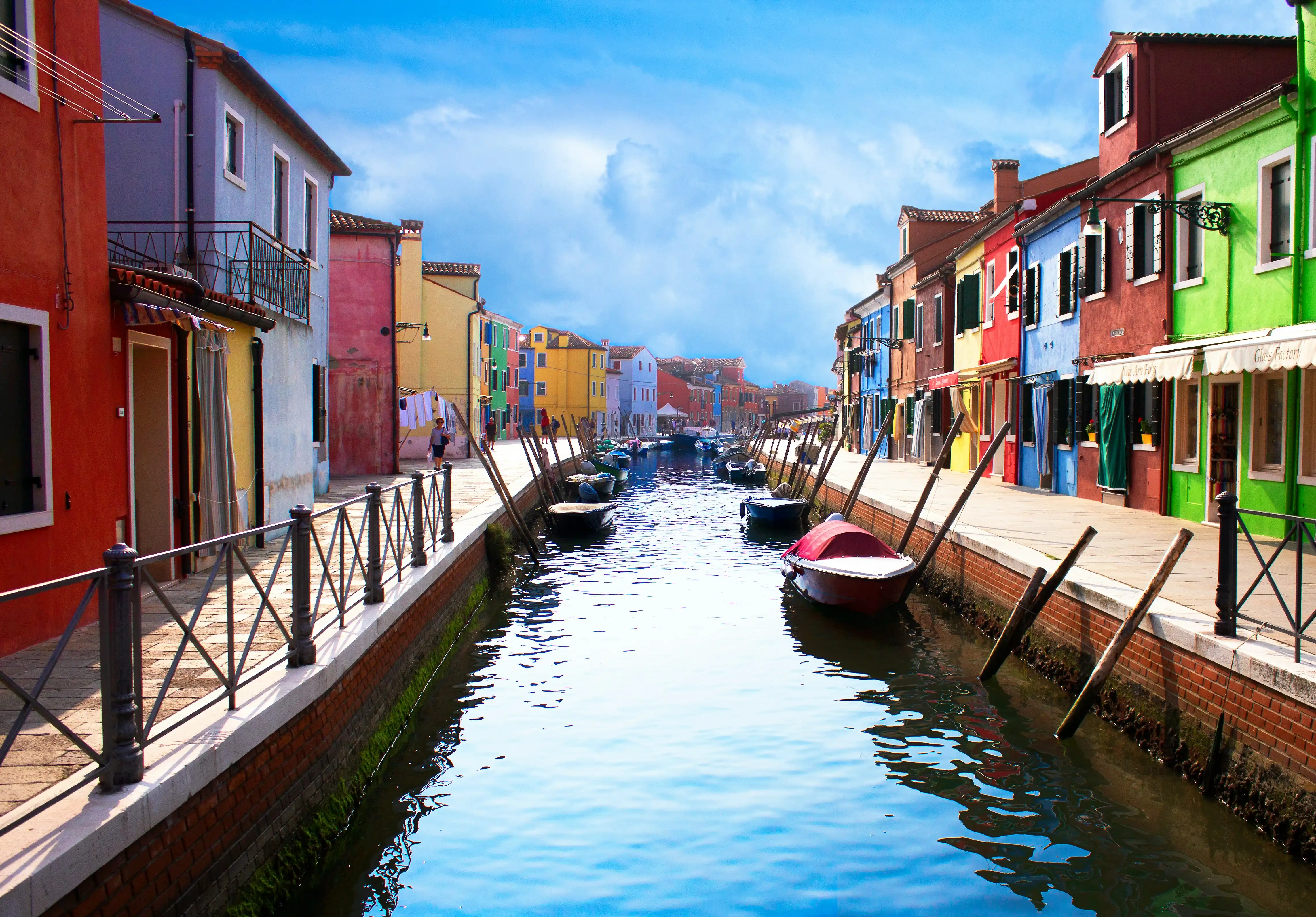
6. The Peggy Guggenheim Collection
In a city famed for Byzantine domes and Renaissance frescoes, the Peggy Guggenheim Collection offers a refreshing and bold contrast. Housed in the elegant Palazzo Venier dei Leoni along the Grand Canal, this museum is one of Europe’s leading collections of modern art.
American heiress and art patron Peggy Guggenheim made Venice her home in the 1940s and filled her residence with works by 20th-century icons like Picasso, Dalí, Pollock, Miró, and Magritte. Her passion and eye for talent shaped a collection that now spans movements from Cubism and Surrealism to Abstract Expressionism and Futurism.
Wander through light-filled galleries and quiet sculpture gardens, where masterpieces sit just steps away from the shimmering water. It’s an intimate, inspiring space more personal than grand and ideal for those seeking depth and discovery beyond the city’s classical past.

